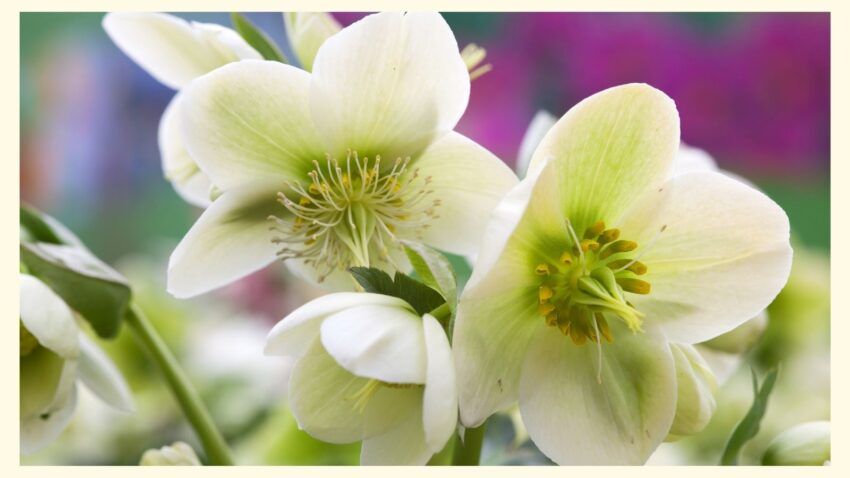Hellebores are a unique flower that blooms in winter and spring and remains evergreen year-round.
Growing hellebores is a worthwhile task for the gardener. Aside from lovely and unusual flowers, the hellebore plant has attractive, green foliage that is aesthetically pleasing in the landscape. Once established, hellebore care is minimal. This herbaceous or evergreen perennial is disliked by deer and other animal pests prone to munching on plants. All parts of the hellebore plant are poisonous, so take care to keep children and pets away.
About Hellebore
Hellebores (scientific name Helleborus) are cold-weather flowering plants from the Ranunculaceae family that produce rose-like blossoms (made up of protective sepals) in many colors, including green, white, and purple. Most hellebores plants are evergreen in USDA Hardiness Zones 4 through 9 (meaning they retain their green foliage even during the winter) and early bloomers, blossoming as early as January and remaining in bloom until March.
Hellebores are perennials, meaning they grow back year after year and drop seeds to self-sow and spread additional seedlings in your garden.
How to Grow Hellebore
When planting from seed or division, place the hellebore into well-draining, organic soil in filtered sun or a shady location. The hellebore plant will return for many years; make sure the space will accommodate growth and has proper sunlight. Hellebores need no more than a few hours of dappled light and grow successfully in shady areas. Plant the hellebore under deciduous trees or scattered through a woodland garden or shaded natural area.
Soaking the soil in which the hellebore is growing helps the hellebore plant to look its best. Hellebore care includes the removal of older leaves when they appear damaged. Care for hellebores should also include careful fertilization. Too much nitrogen may result in lush foliage and a shortage of blooms.
Plant hellebore seeds in the fall. A 60-day moist chilling period is needed when planting seeds of the hellebore plant. Planting seed in fall allows this to happen naturally in areas with cold winters. Wait three to four years for blooms on young plants grown from seed. Divide overgrown clumps in spring, after flowering, or in autumn.
How to Care for Hellebore
Once hellebores are established, they will need very little water, or even much in the way of fertilizer. An annual mulch of leaf mould or home-made compost is all they really need.
To prevent any build-up of fungal spores from the black spot that they are prone to it is a good idea to chop the old leaves off right to the ground just before the flower buds appear in late winter. This will also help to reveal the flowers that can be hidden by the large leathery leaves. A good thick mulch at this point will set the emerging flowers off nicely as well as feed up the plants for the growing season ahead.
Pruning
The best time to prune hellebores is in late winter or early spring when new growth begins to appear on your plant. The new growth should come up between the older stems and leaves. When it does, cut away tattered, old growth with sharp pruning shears. Cut the old growth as close to the base as possible.
Propagating Hellebore
Hellebores can be propagated by division. The best time to divide is in late winter before they flower. It is easiest to dig the entire plant and shake or wash off the soil so you can see where the buds are on the crown. Make sure each division has at least 2 buds. (Helleborus foetidus and Helleborus argutifolius do not divide well and are best started from seed.)
Most varieties will reseed and form colonies of plants, but hybrids can produce seeds that don’t resemble the parent plant. Seeds can produce plants that resemble one of the parent species, not the hybrid. You can move the seedlings to another location in the garden once they are large enough to handle and have developed true leaves.

